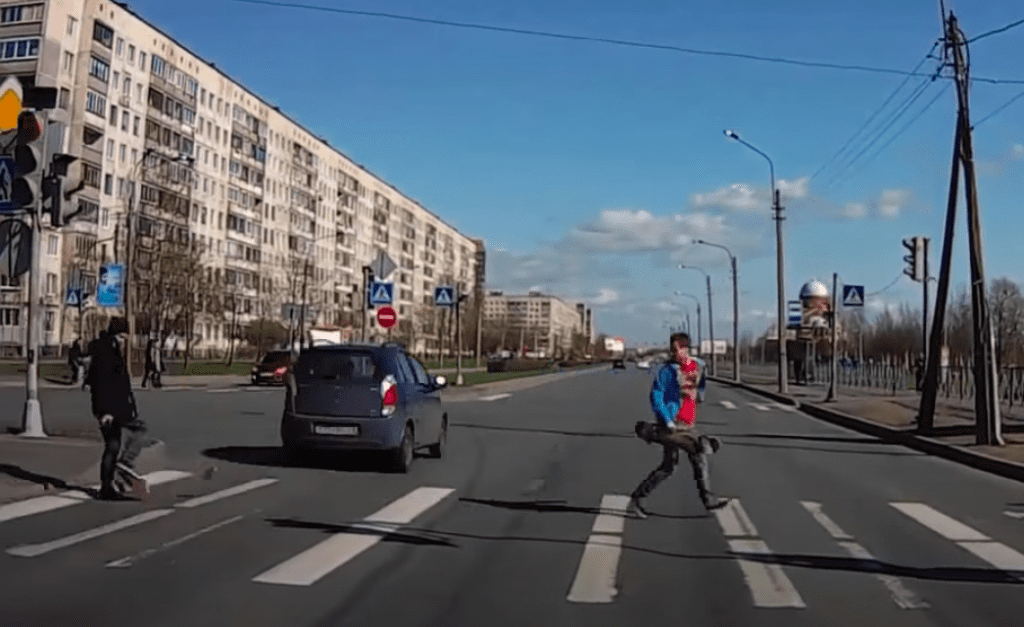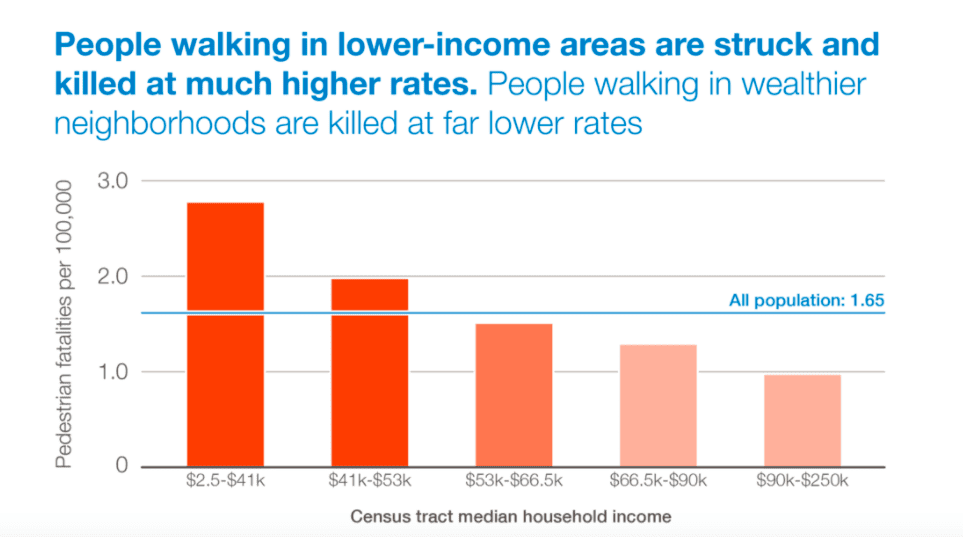‘Equitable Streets’

The mindset that James Lindsay calls “Critical Social Justice” makes it impossible to think certain thoughts. Take a look at what Transportation Secretary Pete Buttigieg just tweeted:
These disparities are awful, but we know how to fix them. It’s time to reverse these patterns of exclusion and invest in safer, equitable streets.https://t.co/PXZX1qsMyV pic.twitter.com/qbUU1jXtgu
— Secretary Pete Buttigieg (@SecretaryPete) March 24, 2021
“Equitable streets”? What he’s talking about is the fact that, according to this report, poor people, black people, and Native Americans die disproportionately crossing the street:

Also, poor people:

Look, I have no trouble believing that street design in poorer neighborhoods is overall less pedestrian-friendly than in wealthier neighborhoods. I’m not saying that I do believe it; I’m just saying that it seems plausible.
Nevertheless, the idea that because more black people die in pedestrian accidents than whites, Latinos, or Asians, our street design is “inequitable,” and therefore disadvantages black people, is pretty shaky. In academic studies, persistent poverty has been linked to a lack of self-control (see, for example, here), though there is real debate about causation (i.e., are poor people poor because they lack self-control, or does poverty create a lack of self-control in individuals suffering it?). Might it not be the case that the higher rates of pedestrian deaths among the poor, and among black Americans, might have to do with lesser self-control?
Maybe, maybe not. But it’s worth considering. Why are Asian pedestrians far less likely to be hit by cars than white and Hispanic pedestrians? Could there be something in Asian culture that rewards cautiousness, and inculcates it into those within the culture?
When I moved to New York City, one of the first things I learned is that jaywalking — crossing a street against the light — is common. You can usually tell who the tourists in Manhattan are by their refusal to jaywalk. Jaywalking is dangerous, but it is embedded in the culture of New York City. Toward the end of his last term, Mayor Giuliani tried to get cops to enforce the anti-jaywalking laws, but it was hopeless, and they gave up quickly. Whenever I go to Europe, it feels weird not to jaywalk. And in truth, it’s a lot easier to get away with jaywalking in a more freewheeling culture like Italy than in buttoned-up Germany.
Russia is well known for having lots of driving accidents, including involving pedestrians. It’s so bad there that you can find compilations on YouTube of Russian close calls with pedestrians. This article looks into the problem. Excerpt:
Russians have long believed that careless driving is just a part of the national mentality, and that foreigners are somehow more responsible drivers, unlike Russians who love to break the rules. This is not quite true, however, argues Alexander Shumsky, head of Probok.net, a project that works on improving the country’s transportation system.
There is no such thing as a national driving mentality, adds Shumsky, but rather, only a set of habits that results from the existing environment: the quality of road infrastructure, traffic management and society’s general cultural level.
“When we put Russians into a German environment, for example, they become more law-abiding, and it’s not because of the high fines but because the surrounding culture doesn’t let them stand out,” Shumsky explains. “The same is true the other way round: if we put a German into a Russian context, then after a short while he or she will start to drive the way Russians do, breaking the rules, etc. – all because the surrounding environment pushes him or her to do it.”
Basically, people are the same all over the world: they cross the street, exceed the speed limit and make U-turns in places where it’s convenient for them, even if it means breaking the rules.
The article goes on to say that there are structural problems with Russian street design and traffic laws, the changing of which might fix the problem. But it does say that Russians have a habit of doing what they want to do — crossing the street where they want to cross, regardless of whether or not there’s a crosswalk there, and just paying the fines for speeding, and continuing to drive like they want to. So there is a cultural element that makes Russia a much more dangerous place to drive than in Europe and the US.
Anyway, the idea that the disparities in pedestrian deaths can only be explained through racism shows the poverty of Critical Social Justice thought. Ibram X. Kendi writes:
Racial inequity is when two or more racial groups are not standing on approximately equal footing. Here’s an example of racial inequity: 71 percent of White families lived in owner-occupied homes in 2014, compared to 45 percent of Latinx families and 41 percent of Black families. Racial equity is when two or more racial groups are standing on a relatively equal footing. An example of racial equity would be if there were relatively equitable percentages of all three racial groups living in owner-occupied homes in the forties, seventies, or, better, nineties.
A racist policy is any measure that produces or sustains racial inequity between racial groups. An antiracist policy is any measure that produces or sustains racial equity between racial groups. By policy, I mean written and unwritten laws, rules, procedures, processes, regulations, and guidelines that govern people. There is no such thing as a nonracist or race-neutral policy. Every policy in every institution in every community in every nation is producing or sustaining either racial inequity or equity between racial groups.
So because proportionally more black people die in pedestrian accidents than nonblack people, our streets are inequitable. The Transportation Secretary believes that we must build equitable streets, whatever that is. Individual agency has no role in street crossing. It can only be those bigoted streets. The Biden administration is going to build streets so perfect that nobody has to exercise common sense in crossing them.